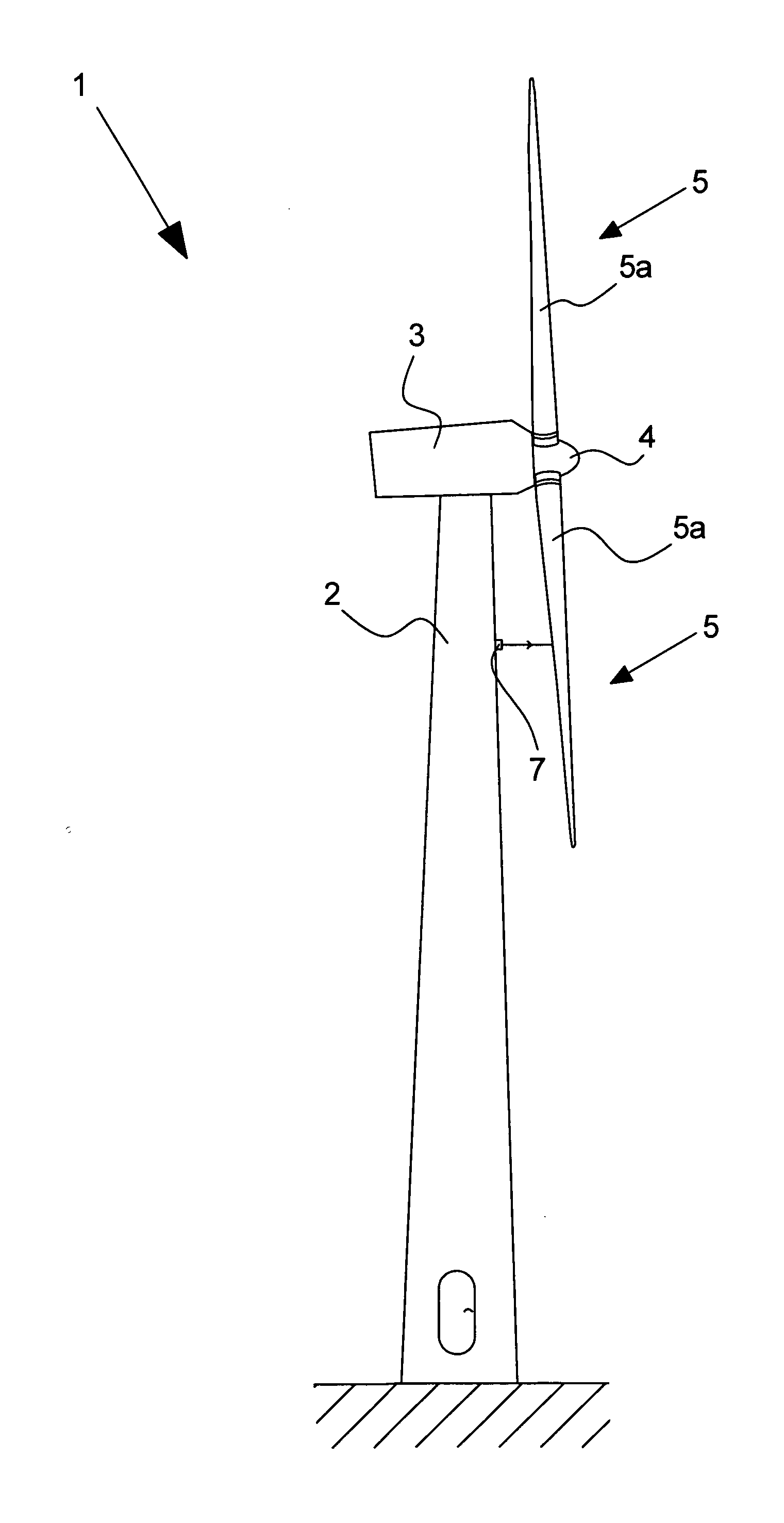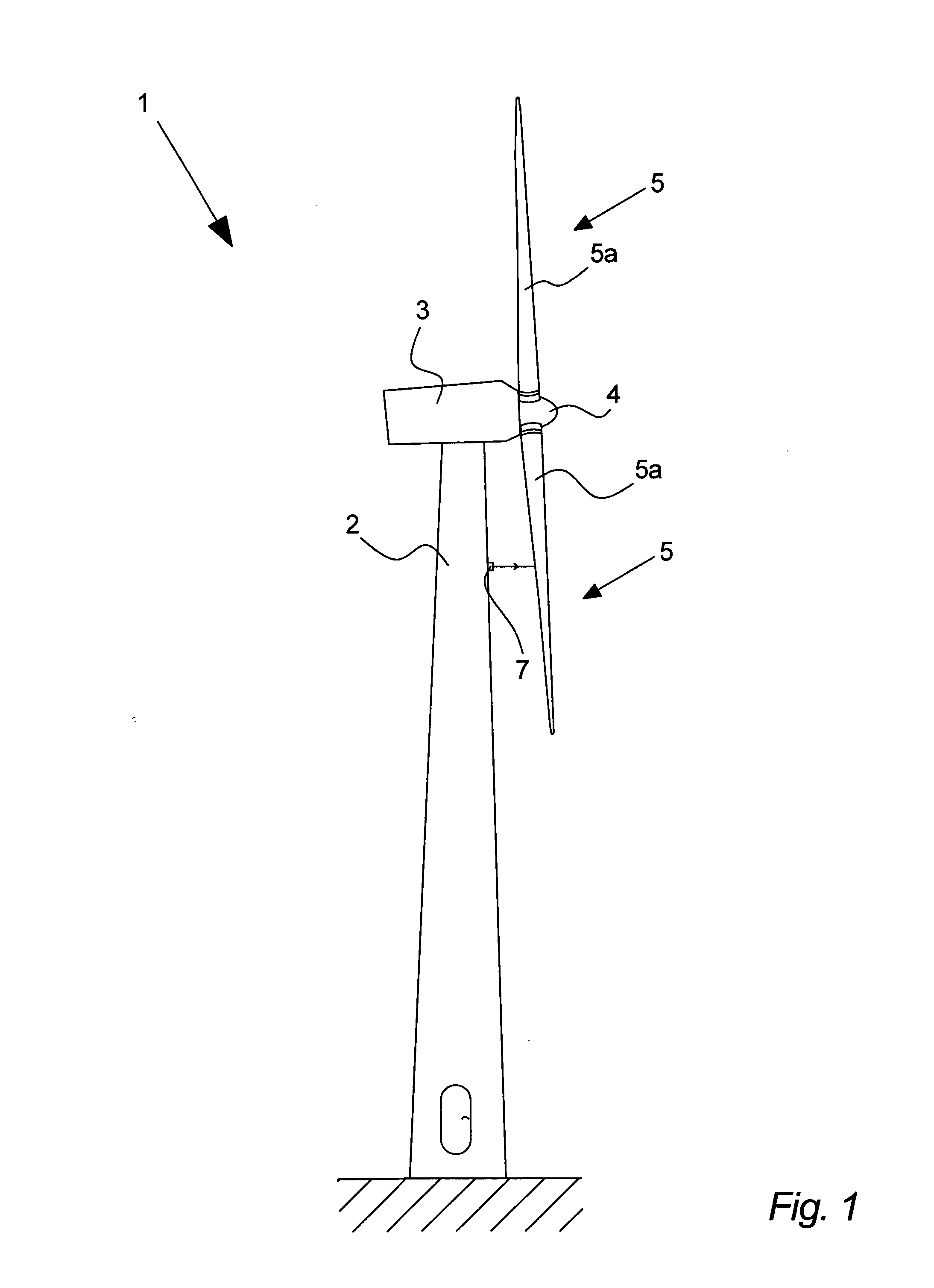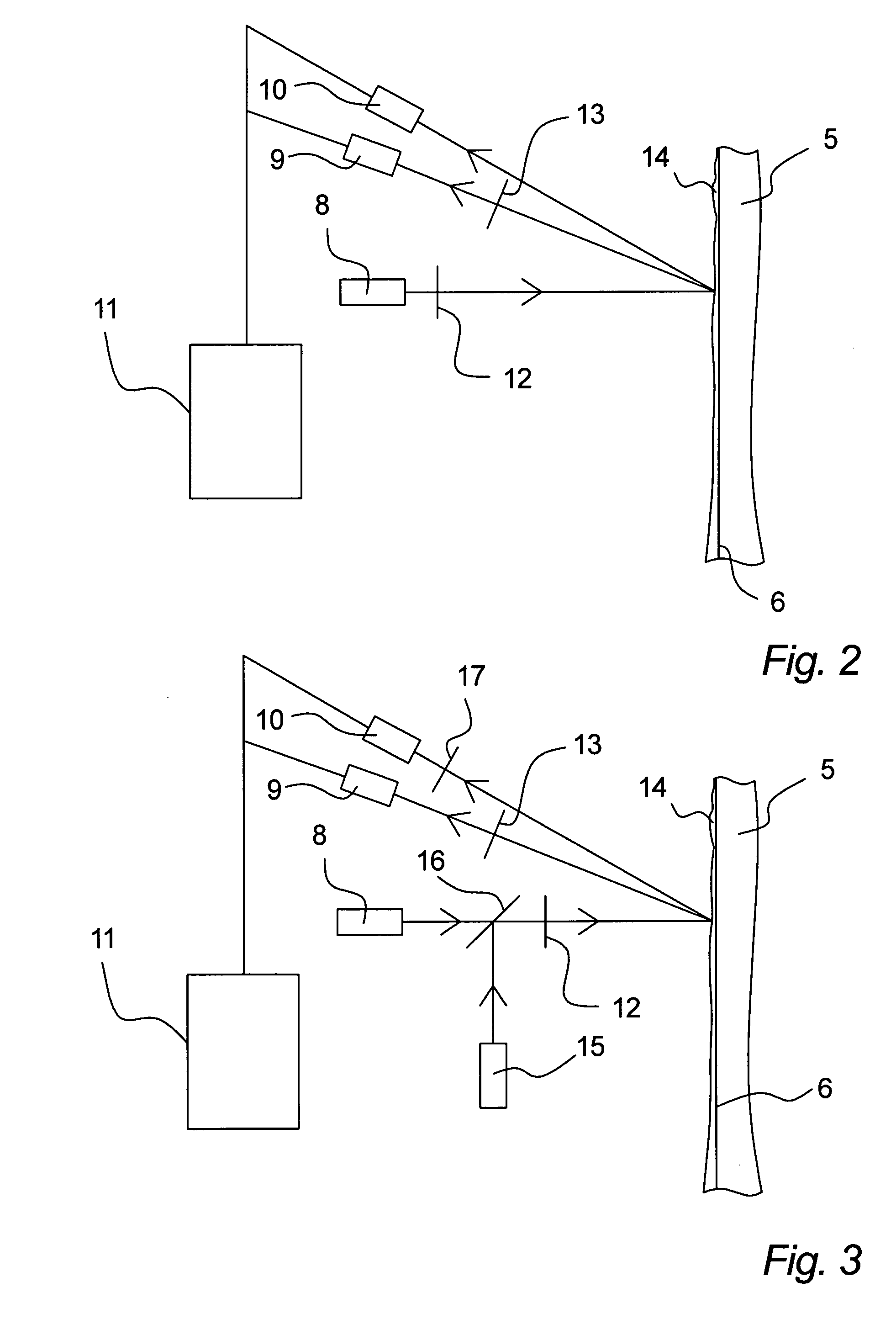Detection of ice on airfoils
a technology of airfoils and ice, which is applied in the direction of motors, engine control, wind energy generation, etc., can solve the problems of serious damage to overload and stress on the blades of wind turbines, and the surrounding environment of wind turbines, so as to increase the size of wind turbines, increase safety and efficiency, and cost high
- Summary
- Abstract
- Description
- Claims
- Application Information
AI Technical Summary
Benefits of technology
Problems solved by technology
Method used
Image
Examples
Embodiment Construction
[0164]FIG. 1 illustrates one example of a side view of a structure being a modern wind turbine 1 with a tower 2, a wind turbine nacelle 3 positioned on top of the tower 2 and a rotor hub 4. The wind turbine 1 comprises a wind turbine rotor comprising at least one airfoil 5 being a wind turbine blade 5a, preferably two or three wind turbine blades 5a of well known types, such as ones made of a resin reinforced with fibreglass, carbon fibre, a metal, a composition of different materials or the like, each blade being connected to the hub 4, e.g. through a pitch mechanism (not shown) that allows the blade 5a to be turned about a longitudinal axis. A device 7 for detection of surface conditions such as formations of ice is in this embodiment of the invention arranged at the tower 2 of the wind turbine 1. It is understood that the device for detecting surface conditions 7 could also be referred to as “surface condition detecting device 7”, “device 7 for detecting surface conditions” or ju...
PUM
| Property | Measurement | Unit |
|---|---|---|
| wavelength range | aaaaa | aaaaa |
| wavelength range | aaaaa | aaaaa |
| length | aaaaa | aaaaa |
Abstract
Description
Claims
Application Information
 Login to View More
Login to View More - R&D
- Intellectual Property
- Life Sciences
- Materials
- Tech Scout
- Unparalleled Data Quality
- Higher Quality Content
- 60% Fewer Hallucinations
Browse by: Latest US Patents, China's latest patents, Technical Efficacy Thesaurus, Application Domain, Technology Topic, Popular Technical Reports.
© 2025 PatSnap. All rights reserved.Legal|Privacy policy|Modern Slavery Act Transparency Statement|Sitemap|About US| Contact US: help@patsnap.com



